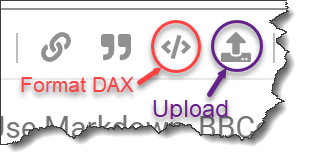Using a fact table of time and billing records, I wish to add two columns to a table visual from the same dim table. I will be displaying the same description column from the dim table for both columns, but each column will have different filter criteria. In other words, this single dim table is a collection of different types of dimensions such as “hours type”, “region” , or “position”. I want to display one column with “hours type” and another with “position”. There is a unique ID to identify dim records that are “hours type” and a different ID assigned to “position” records.
I am hoping to use a measure to define the filtering but I haven’t been successful. There is no calculation needed, just filtering. I’m sure there’s a completely simple solution I’m not seeing. Thanks.
Hi @JWilliams, we aim to consistently improve the topics being posted on the forum to help you in getting a strong solution faster. While waiting for a response, here are some tips so you can get the most out of the forum and other Enterprise DNA resources.
-
Use the forum search to discover if your query has been asked before by another member.
-
When posting a topic with formula make sure that it is correctly formatted to preformatted text </>.

-
Use the proper category that best describes your topic
-
Provide as much context to a question as possible.
-
Include the masked demo pbix file, images of the entire scenario you are dealing with, screenshot of the data model, details of how you want to visualize a result, and any other supporting links and details.
I also suggest that you check the forum guideline How To Use The Enterprise DNA Support Forum. Not adhering to it may sometimes cause delay in getting an answer.
Please also check the How To Mask Sensitive Data thread for some tips on how to mask your pbix file.
Hi @JWilliams, we’ve noticed that no response has been received from you since the 2nd of December. We just want to check if you still need further help with this post? In case there won’t be any activity on it in the next few days, we’ll be tagging this post as Solved. If you have a follow question or concern related to this topic, please remove the Solution tag first by clicking the three dots beside Reply and then untick the checkbox. Thanks!
A response on this post has been tagged as “Solution”. If you have a follow question or concern related to this topic, please remove the Solution tag first by clicking the three dots beside Reply and then untick the check box. Thanks!
